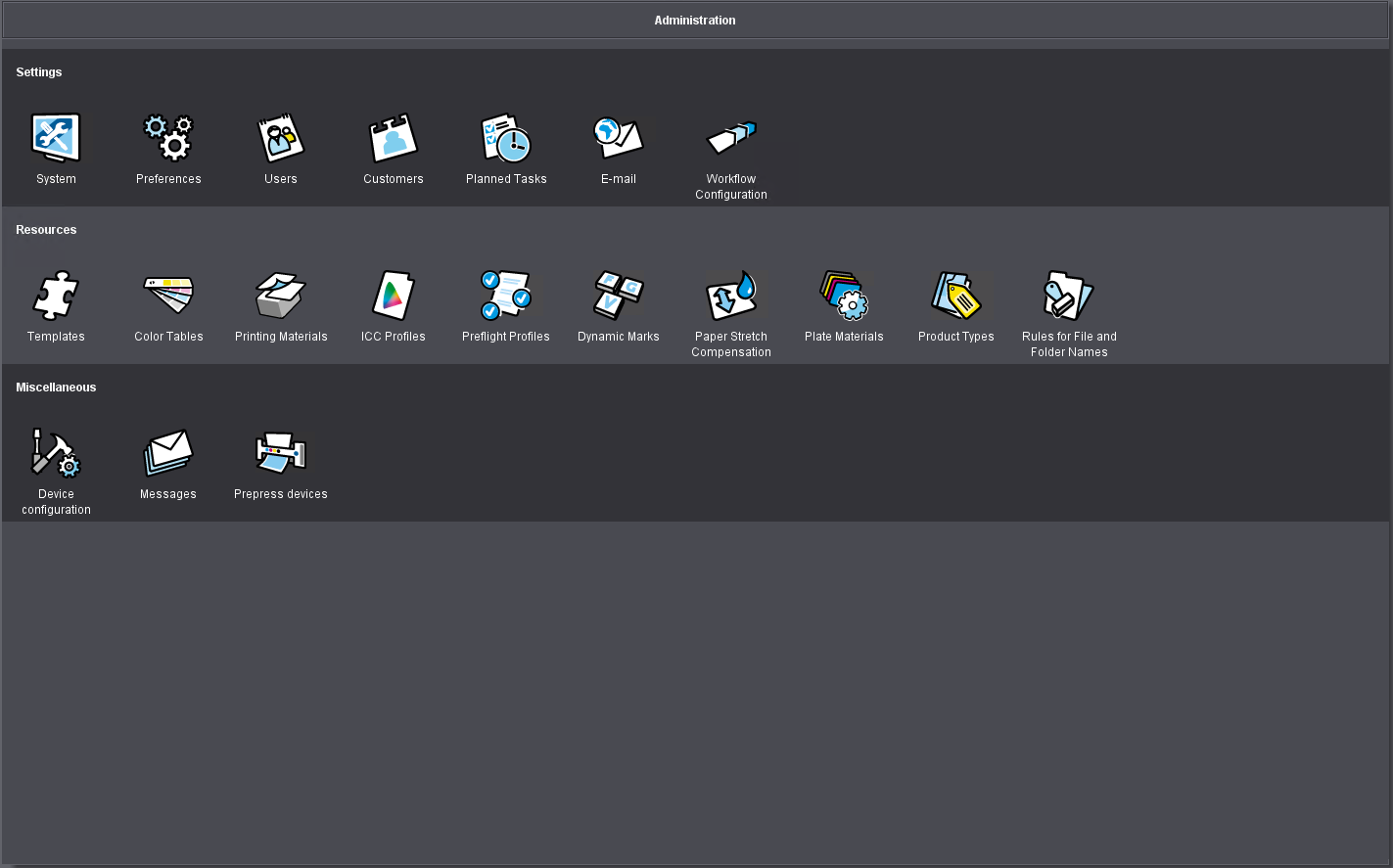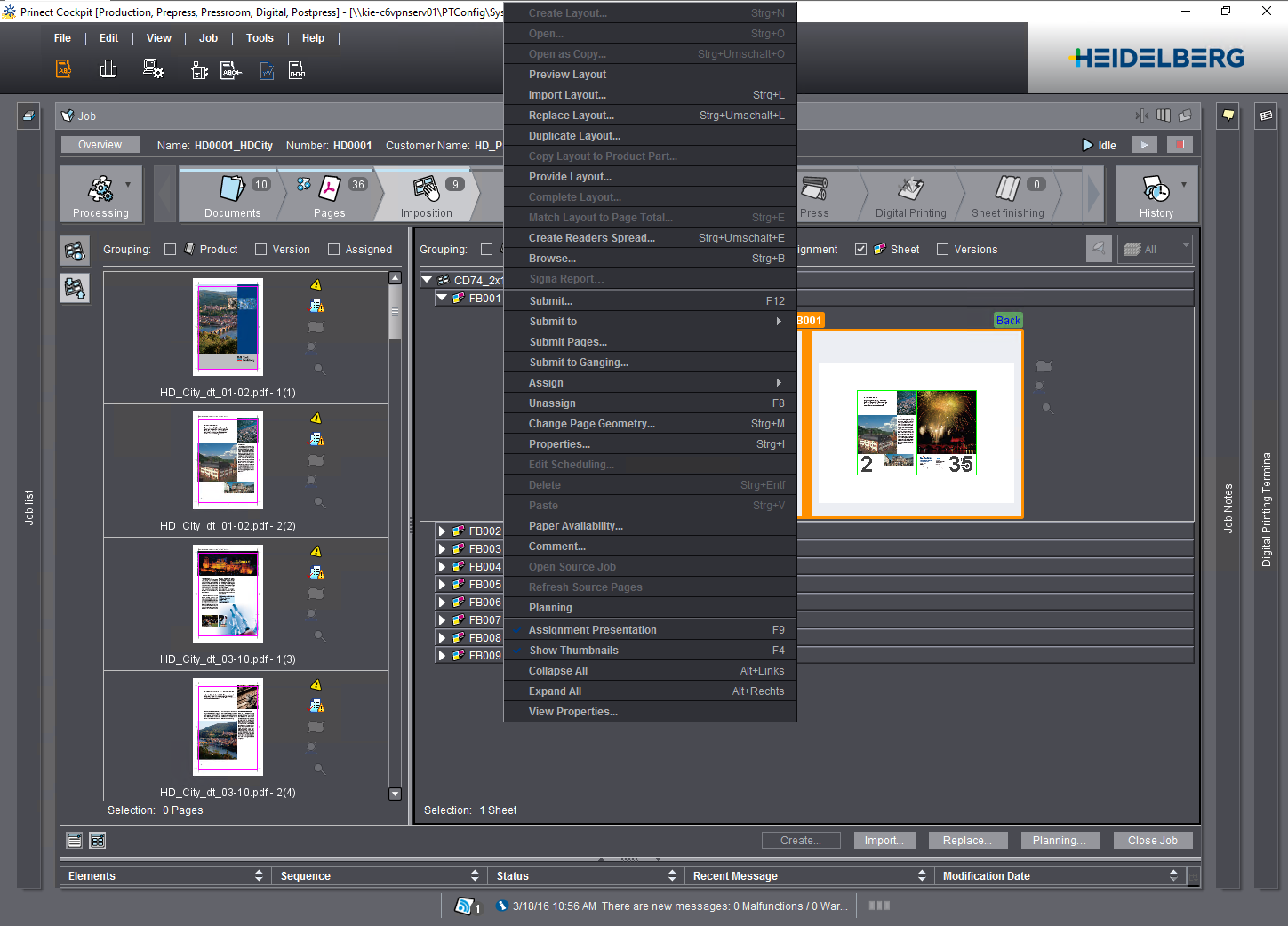The content of a dynamic window changes depending on which work context is currently active. The various workspaces that you can view using the section toggles display in dynamic windows.
View modes
The contents of a dynamic window can display in various view modes.
List view
You can display a great number of single elements on a small amount of space in a list, e.g. jobs in the job list. Lists often have several levels. You can customize the setup of many lists (see Customize list view).
If a list view displays, you can switch to a detailed view by opening an item in the list (e.g. a job in the job list). Generally, this is where you can set up your data or view details.
You can open a selected list item by the following actions:
•click a job in the job list
•double-click a list item
•click the "Open" button
•select "Open" in the context-sensitive menu
•use the shortcut "Ctrl+O"
•use the "File > Open" command.
Note: In all lists in the Prinect Cockpit, you can mark items and copy them to the clipboard with "Ctrl + C". You can then paste these items into a spreadsheet (Microsoft Excel) with "Ctrl + V". In this process, the column headers are used automatically as the first row in the spreadsheet.
Display of the steps in an open job
When you are in an open job, you can go to another step by clicking the icon of this step in the upper part of the window.
Tab view
If you are in a tab view, e.g. "Administration > E-Mail", you can switch to another section by selecting a tab.
Icon view
In "Administration", you open the various sections by clicking an icon.

Context menus
Apart from the menus in the menu bar, you can also display a context-sensitive menu by right-clicking, for example, an item in the list. This menu has commands relating to the element you marked.

Buttons in the Dynamic Window
The lower part of the dynamic window usually has buttons for fast access to frequently used actions. The buttons that display vary according to the content of the dynamic window.
